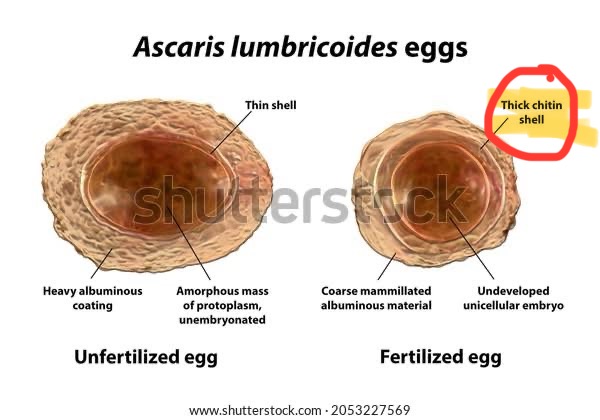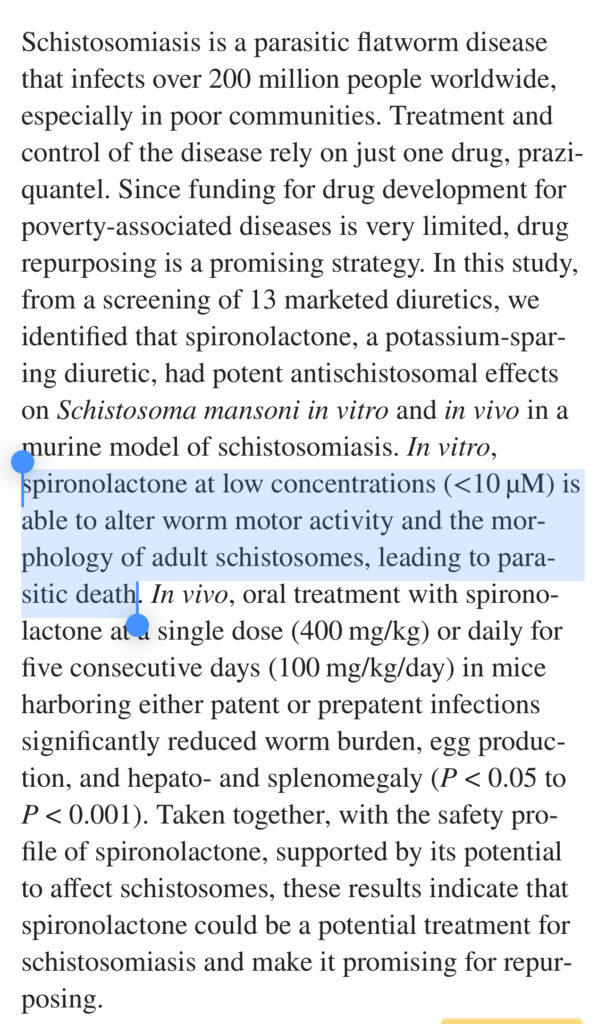
They’re about the size of ovaries, they may be connected with a string that some call a worm, some call “mucoid plaque,” – you’re on your own to look for pictures of that, barf alert. as with anything else, the medical establishment gaslights everyone and says “it’s not real” and to “take your meds” and “trust the experts.” and to shun heretics , ban them , ban them right in the peepee, chuck your rocks, and burn them at the stake. Anyway, if you have these, congratulations mom, you’re a hermaphrodite and you descended from Lemurians (aphrodites). gee im not feeling very pro-life all of a sudden.

it looks like an umbilical cord, and they’ll look like this:

being low on albumen is a likely sign of infection. lets use that word for it.
ARDS can be another.
troon hormones like espiralactona kill them although the only literature references I can find here are in an infection that is, as far as anyone knows, unrelated:

they need a LOT of chitin to make their eggs. and that’s in gelatin, PEG, “vaccines” and pill capsules.





Yes, some of the drugs approved or under development for COVID-19 contain chitosan as a component. For example, the COVID-19 vaccine under development by the company Johnson & Johnson contains a combination of chitosan and the ingredient, polyoxyethylene glycol, which is used to coat the COVID-19 virus. The chitosan in the coating helps to stabilize the virus, while the polyoxyethylene glycol helps to preserve and prolong the shelf life of the vaccine.
Other COVID-19 vaccines that use chitosan in their formulations include the vaccines under development by the companies Aculife, Merck, and Moderna.
The childhood vaccines that use chitosan in their formulation include:
- BCG, a vaccine for tuberculosis, which is made from an immunogenic component in the bacterium called tuberculin potensin.
- Hepatitis B vaccine, which uses the vaccine component, hepatitis B surface antigen, and an added preservative called thimerosal that combines with the surface antigen for extended storage.
- Rabies vaccine, which uses the rabies virus protein to elicit an immune response in the body that provides protection from the virus.
- Quadrivalent meningococcal conjugate vaccine (MenACWY), which uses the conjugates of four meningococcal capsular polysaccharides and a diphtheria protein carrier (tetanus toxoid) to produce an immune response in the body.
- Tdap (Tetanus, diphtheria, and pertussis) vaccine, which combines the tetanus toxoid, diphtheria toxoid, and acellular pertussis components into a single vaccine for protection against Tetanus
No, the Sputnik V and Sinovac COVID-19 vaccines do not contain chitosan. The Sputnik V COVID-19 vaccine was developed by the National Research Center for Epidemiology and Microbiology in Moscow, Russia. It is a viral vector vaccine that uses two modified versions of the adenovirus, one for each dose. The Sinovac Covid-19 vaccine is based on the SARS-COV-2 virus, and it is a killed virus vaccine that contains inactivated viruses. Neither of these vaccines uses chitosan in their formulation.
Yes, it is possible for a vaccine containing chitosan to cause an autoimmune reaction to chitosan. Autoimmune diseases are conditions where the body’s immune system attacks its own organs, tissues, and cells. An autoimmune response to chitosan in vaccines can cause symptoms such as irritation, redness, swelling, itchiness, etc. in the area around where the vaccine was administered. It is important to consult with a healthcare professional if you experience any of these symptoms after receiving a vaccine containing chitosan.
Yes, the vegan and fruit-based food coating, “apeel”, is produced by the American company Apeel Sciences and contains chitosan. Chitosan is a natural polysaccharide that is derived from chitin, which is a natural biopolymer found in the exoskeleton of shrimp, lobsters, and other shellfish. Chitosan can help to preserve fruits and vegetables by acting as a natural preservative and film former in food products.